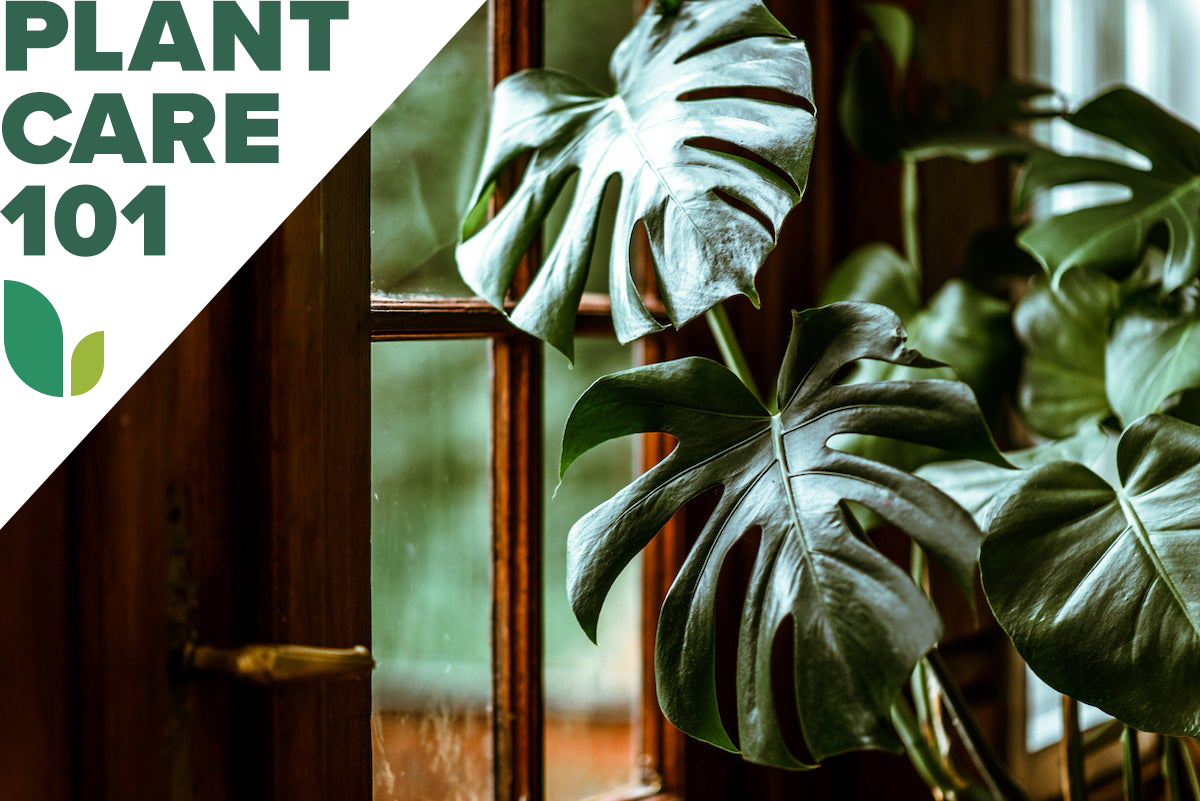

We may earn revenue from the products available on this page and participate in affiliate programs. Learn More ›
While there are 48 known species of Monstera, only a handful are grown as houseplants, and the most common is Monstera deliciosa. The plant is often mistaken for a split-leaf philodendron, and though the two plants resemble one another, they come from two entirely different plant families.
Learn all about caring for this prized indoor plant so you can enjoy it for years to come.
RELATED: The One Rule of (Green) Thumb When Decorating With Houseplants
Monstera Plant Care at a Glance
Common Name: Split-leaf philodendron
Scientific Name: Monstera. Most common species: Monstera deliciosa
Soil: Loamy, well-drained potting mix, pH: 5.5 to 7
Light: Medium to bright indirect sunlight
Water: Once every 1–2 weeks
Food: Balanced houseplant fertilizer
Temperature and Humidity: 60 to 80 degrees Fahrenheit, 50 to 60 percent humidity
Propagation: Cuttings
Safety: Mildly toxic to humans and pets
How to Care for Monstera Deliciosa

Monsteras have upright or vining growth habits. The vining varieties are hemiepiphytes, which means they will grow toward a means of support, such as a trellis or tree trunk, rather than growing toward the sun. Their leaves are typically thick and glossy and may feature inner holes or large, ornate splits.
Monsteras with upright growth habits range in height from less than 1 foot to more than 10 feet tall, and they also come in a variety of Monstera leaf patterns, both solid and split.
Select Soil for Monstera Plants
Monsteras like soil that drains well but is loamy and with either neutral or slightly acidic pH (5.5 to 7). They don’t grow as well in alkaline soil with pH levels higher than 7. The best soil for Monstera is often a commercial potting mix designed for indoor plants. The mixture should contain sterile organic matter such as coconut coir or sphagnum peat moss. An example of a suitable blend is Miracle-Gro’s indoor potting mix.
Monstera plants can survive and thrive for 20 years or longer, but salt deposits from watering can collect in the soil after a few years. When this happens, the plant’s leaves can wilt, and some might turn yellow and fall off. To remedy the problem, consider replacing the soil with fresh potting mix every two to four years.
Choose the Right Light
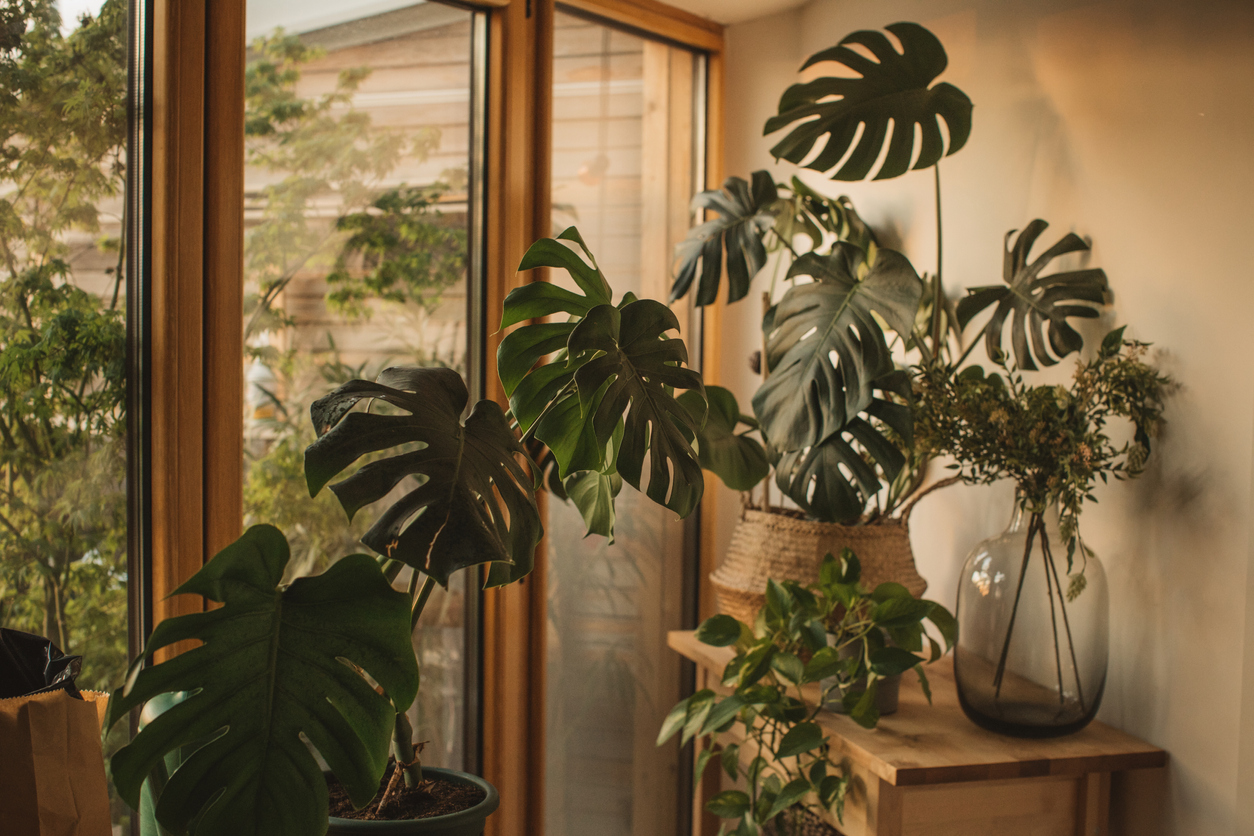
Monsteras prefer medium-to-bright indirect light, ideally in a north-facing window. In a room with multiple windows, make sure the plant doesn’t receive direct sunlight. In Monstera’s natural habitat, the plant grows along the tropical jungle floor, shaded by towering trees that block the sun’s rays.
You can take your Monstera houseplant outdoors during summer as long as the temperature doesn’t drop below 55 degrees Fahrenheit. The plant can enjoy its time outside beneath a large tree for shade or on a covered porch or patio that offers protection from the sun. It should also be kept in a spot that offers shelter from strong winds. While Monstera loves light breezes, its large leaves tear easily in strong winds.
RELATED: How to Help Your Houseplants Survive the Winter
Water Your Monstera

To determine the best watering schedule for your Monstera plant, start by watering it thoroughly, allowing excess water to drain out of the holes at the bottom of the pot (watering in the sink or tub works well). Monsteras like regular watering but don’t like sitting in soggy, saturated soil.
Then, check the surface of the soil every day afterward. When the top inch of soil becomes dry to the touch, but the soil beneath is still slightly damp, it’s time to water again. The roots of a large plant will draw water more quickly than those of a small plant.
Fertilize Your Monstera
Fertilize your Monstera monthly during its fast-growing seasons of spring and summer. Use a balanced houseplant fertilizer, such as one with an N-P-K ratio of 6-12-6 that will stimulate deep leaf color and robust growth.
For less frequent fertilizing, consider using a continuous feeding product, such as Miracle-Gro’s indoor plant spikes, which will dissolve gradually over two months. Follow the directions carefully when using any fertilizer, because larger Monstera plants require more fertilizer than smaller ones.
Set the Temperature and Humidity
Monstera plants prefer temperatures of 60 to 80 degrees Fahrenheit and 50 to 60 percent humidity. A furnace can dry out the air during the cold season, so consider misting Monstera with water every week or so. For more consistent humidity, run a humidifier in the room.
If you’re growing more than one Monstera, it’s a good idea to put them all in the same room so you don’t need to run a humidifier in additional rooms during winter. Plant groupings also add some humidity to the area.
Prune Your Monstera
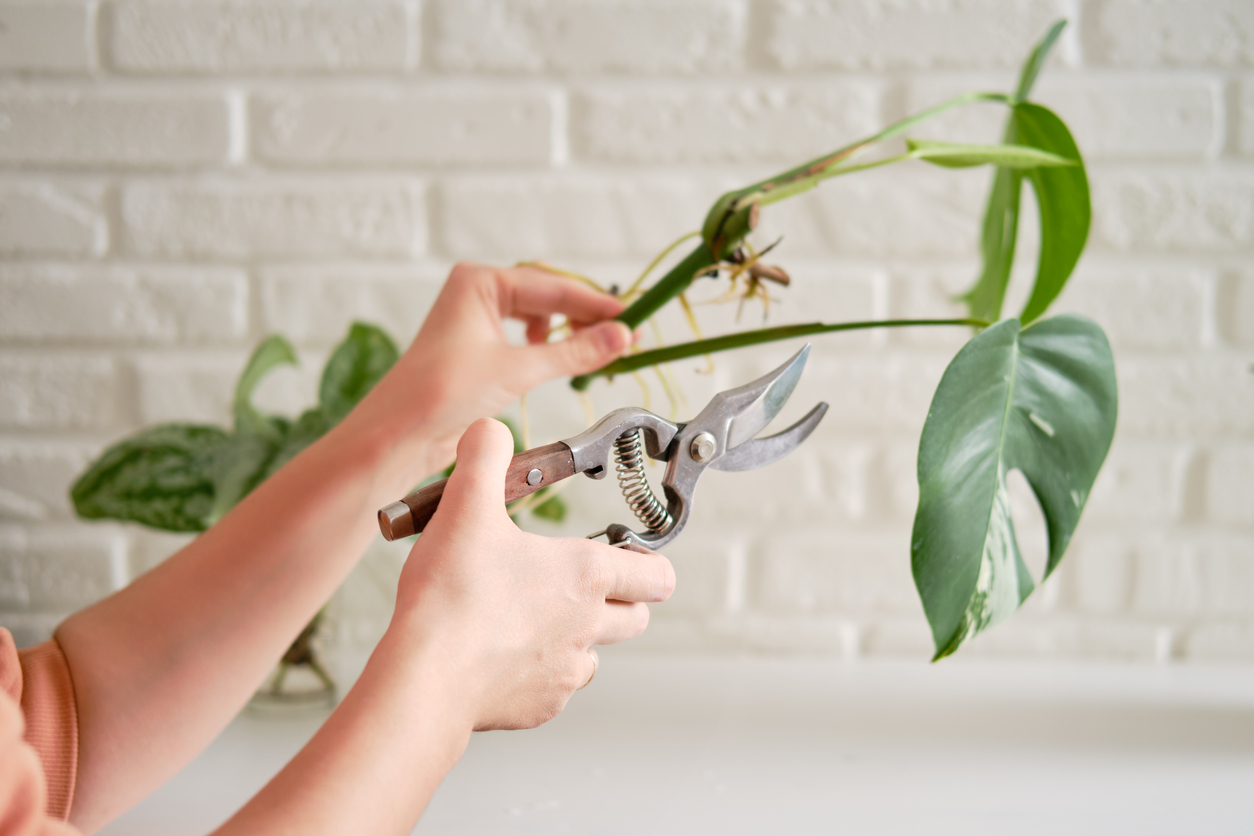
To prune back yellowed, browned, or diseased leaves, start with sharp, clean scissors or shears, ideally wiped with rubbing alcohol, then cut the leaves off at the base. If the leaves are fine but you want to control your Monstera’s growth, try to find stems with multiple leaves so you can reduce the number of cuts needed, then cut beneath a node. Cutting beneath the node allows you to propagate your cutting.
Monsteras also have aerial roots that you can trim back. Trim the roots close to the stem or a node, but don’t cut either the stem or node since it can weaken the plant.
Propagating Monstera Deliciosa

If you have a Monstera plant you like, or a friend has one, you can easily grow an identical plant from a stem cutting. You can use moist soil in lieu of water in the following steps, but water propagation tends to be easiest and most successful for Monstera plants.
- Select a section of stem that is about 6 inches long and has at least two nodes.
- Cut the stem beneath the nodes with sharp, clean pruning shears at a 45-degree angle.
- Remove all but the uppermost one or two leaves from the tip of the cutting.
- Place the cutting in a glass of water and set it in bright but indirect light.
- Drain and replace the water every three days or so.
Tiny roots should appear within two to three weeks. When they are a few inches long, you can transplant the new Monstera plant into its own pot.
Potting and Repotting Monstera Deliciosa

If your Monstera is outgrowing its existing pot and you want to encourage more growth, it’s time for a bigger container. The repotting process is fairly straightforward:
- Water your Monstera in its existing pot to make it easier to remove.
- Choose a pot that’s 2 to 3 inches wider than the existing pot. Make sure it has drainage holes.
- Fill the new pot with potting soil until it’s about one-third full.
- Gently hold the Monstera from the base of the stems and slowly lift it out of its existing pot. You can gently tip the pot and jiggle the plant from side to side to loosen it if needed.
- Place the Monstera in the new pot and backfill it with potting soil until the soil is about 2 inches above the top of the root ball.
- Thoroughly water the Monstera until water starts coming out of the drainage hole.
To potting a new Monstera follow the same process (the pot doesn’t need to be 2 to 3 inches bigger than the container you bought it in until it begins to outgrow the pot). The key is to make sure that you’re not putting it in a smaller pot than it came in.
Potential Pests and Diseases
Monsteras resist most diseases, but they can develop root rot if watered too often or if the soil doesn’t drain well. Once root rot starts, it can travel up the plant roots quickly and kill the entire plant. If your Monstera has an insect infestation, move it away from other plants and consider using a mild insecticidal soap to spray all the leaves and soil to eradicate the problem.
Common Monstera Problems
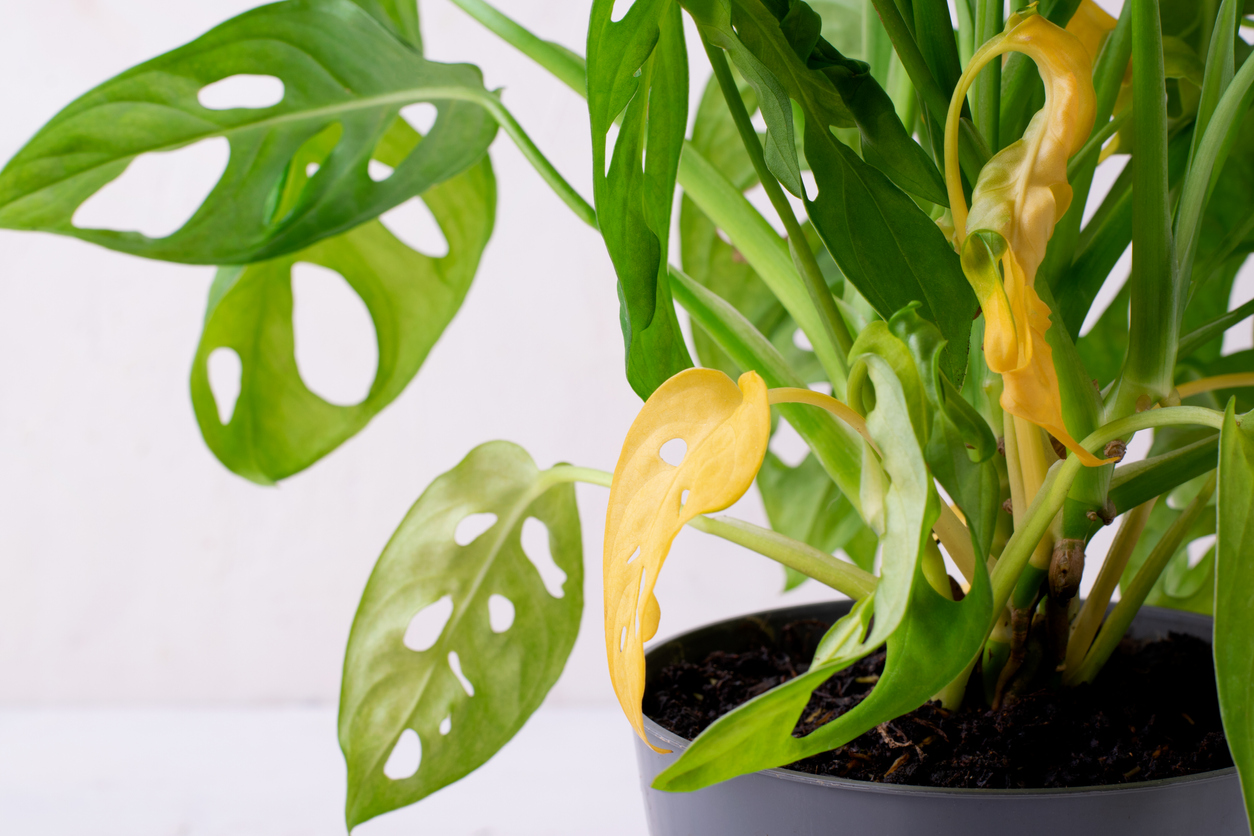
Monsteras are relatively easy to care for, but suboptimal growing conditions can lead to problems. Here are some common problems and fixes:
- Brown, crispy leaves: This is usually due to underwatering, so give your Monstera a big drink and make sure to water it again as soon as the top inch of soil is dry but the rest of the soil is moist.
- Wilting or drooping leaves: This is another common sign of underwatering, so give your Monstera a drink. However, it could also be outgrowing its pot, so if you haven’t repotted it in a long time, it might need a bigger home.
- Yellow leaves: Yellow leaves usually indicate you’re overwatering your plant, so cut back on watering, making sure to let the top inch of soil dry between waterings.
Types of Monstera
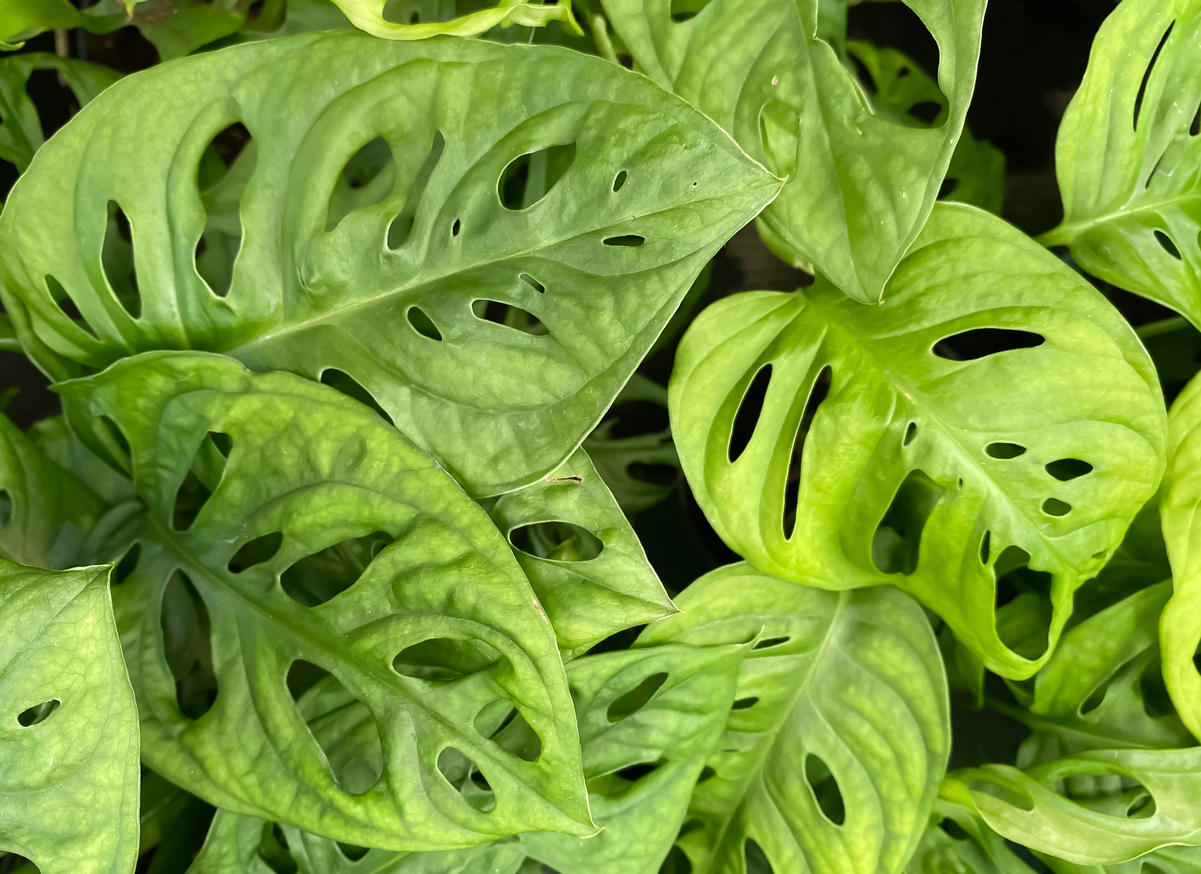
The following types of Monstera are the most popular, and buyers can usually find them at garden centers or order them online. The same Monstera care tips apply to all types.
- Monstera deliciosa: Just about everyone is familiar with this attractive houseplant. Deliciosa features broad leaves with attractive splits that extend from their edges to the center vein. Most deliciosa types grow to an average of 6 feet tall indoors but can grow up to 10 feet or taller if planted in a large pot. The best Monstera deliciosa care includes putting the plant where it will receive indirect light, using a loamy potting mix, and misting it weekly to add humidity.
- Monstera adansonii: This compact houseplant features elliptical leaves that boast oval-shaped holes in the center, giving it the nickname the “Swiss cheese plant.” It’s well suited for growing in hanging pots and planters, where its vining tendrils dip gracefully over the sides. Good Monstera adansonii care is similar to what’s required for growing all Monstera species. It typically grows up to just 3 feet high indoors.
- Mini Monstera: Although this houseplant often goes by the name of Monstera minima and looks just like a small version of M. deliciosa, it’s not a Monstera at all—it’s a member of the Araceae plant family (Rhaphidophora tetrasperma). However, Monstera minima care practices resemble those of true Monstera plants.
- Monstera obliqua: A highly desirable houseplant, but challenging to find in garden centers, the large leaves of this plant are showstoppers that feature a mix of large and small holes. The visual effect is stunning, but this type of Monstera grows very slowly, so fewer plants are available for purchase.
FAQs
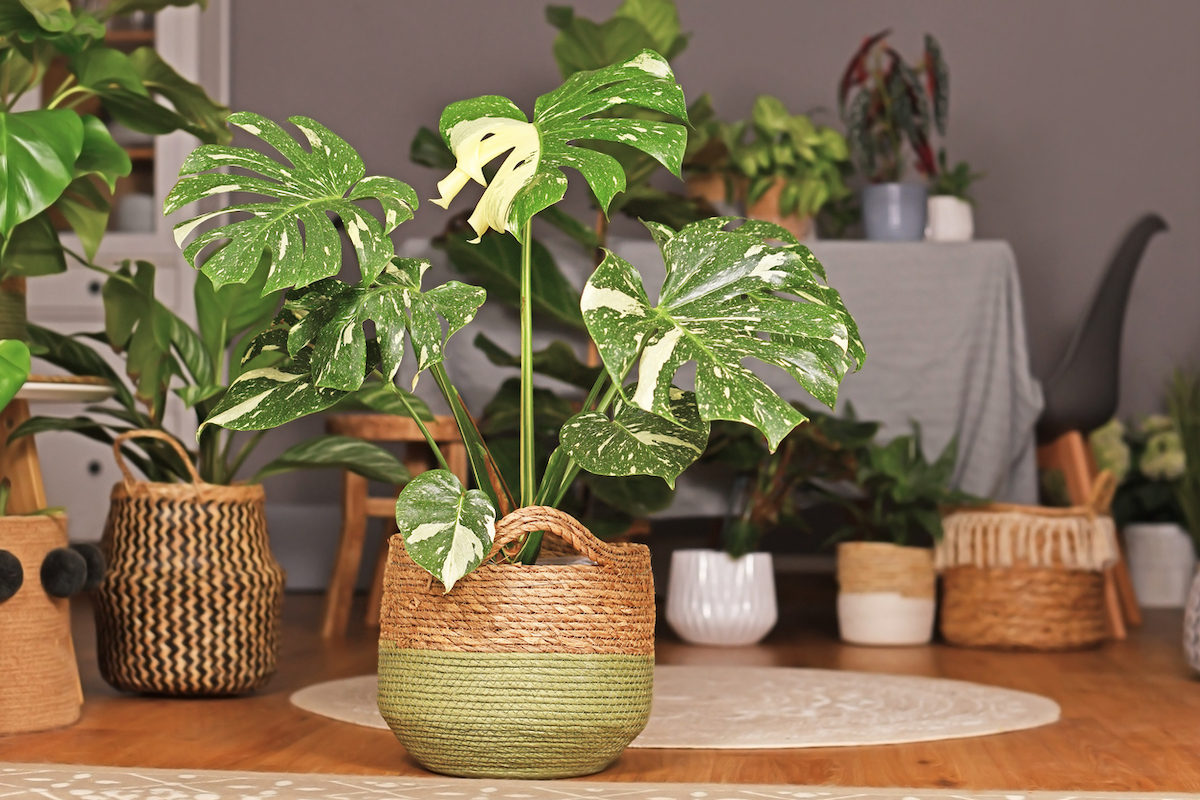
Q. Is Monstera a good indoor plant?
Monstera is among the most popular choices for houseplants because it’s so easy to care for, and it provides tropical appeal.
Q. How big can Monstera grow?
In their natural jungle habitat, some Monstera types can grow upwards of 20 feet. As houseplants, they typically grow between 6 and 10 feet high.
Q. Why won’t my Monstera leaves split?
Monstera plants don’t usually split their leaves until they’re somewhat mature, so if you have a small, young Monstera, you might just need to wait until it grows bigger. But lack of light can also prevent leaves from splitting, and you might need to put your mature Monstera plant in a room with lots of bright but indirect sunlight.
Q. Are Monsteras toxic?
The leaves of the Monstera plant are slightly toxic. If a child or pet chews on one, it can cause burning and irritation of the mouth and tongue due to the calcium oxalate in the leaves. The substance causes instant pain and irritation, so it’s rare that an entire leaf will be chewed or swallowed. If you think a pet has ingested Monstera, call your veterinarian right away. If you suspect a child has eaten the leaves, immediately call Poison Control (800-222-1222) for advice.
